Charlie here from 40kDiceRolls, here again to discuss one of the T’au Empire’s leader battlesuits, the Commander in XV8 Crisis Battlesuit. As always, for more tactics articles, check out the Tactics Corner!
Today we’re talking about the last non-named Commander in the Codex, the Crisis Commander. Commanders strive for years serving their caste and the Greater Good before being able to attain the rank of Commander, choosing the type of suit that best suits their strategic style and philosophy. The Crisis Battlesuit is one of the most iconic T’au battlesuits, some of which are piloted by these Commanders.
On the tabletop, the Crisis Commander is an incredibly versatile and lethal single model unit.
| M | WS | BS | S | T | W | A | Ld | Sv |
| 8″ | 3+ | 2+ | 5 | 5 | 5 | 4 | 9 | 3+ |
Wargear
The Crisis Commander is equipped with a burst cannon and missile pod. It may replace these two weapons with choices from the Ranged Weapon and/or Support Systems lists. It may also take to additional items from the Ranged Weapon and/or Support Systems lists. Further, it may be accompanied by up to 2 Tactical Drones (p.109). Lastly this model may take an XV8-02 Crisis Iridium Battlesuit, increasing its save to 2+.
Ranged Weapon list (p.89 of the T’au Empire Codex)
- Airbursting fragmentation projector (AFP)
- 18″ Assault D6 S4 AP0 D1
- This weapon can target units not visible to the bearer
- Burst cannon (BC)
- 18″ Assault 4 S5 AP0 D1
- Cyclic Ion Blaster (CIB)
- 18″ Assault 3 S7 AP-1 D1
- 18″ Assault 3 S8 SP01 D[D3], mortal wound on any To-Hit rolls of 1
- Flamer
- 9″ Assault D6 S4 AP0 D1
- Autohits
- Fusion blaster (FB)
- 18″ Assault 1 S8 AP-4 D[D6]
- If within half range, roll two dice for damage and discard lower
- Missile pod (MP)
- 36″ Assault 2 S7 AP-1 D[D3]
- Plasma rifle (PR)
- 24″ Rapid Fire 1 S6 AP-3 D1
Support Systems list (p.89 of the T’au Empire Codex)
- Advanced targeting systems (ATS)
- For all the bearer’s weapons (included the “unarmed weapon” used in close combat), make the AP one better (e.g. an AP0 of a weapon becomes AP-1)
- Counterfire defense systems (CFDS)
- Reroll failed hit rolls when firing overwatch
- Drone controller (DC)
- Add 1 for To-Hit rolls for any <Sept> Drones within 6″ of the bearer
- Early warning override (EWO)
- If any enemy units are set up with 12″ of the bearer as a result of an ability that allows them to arrive mid-battle (i.e. teleporting to the battlefield), then at the end of that phase, the bearer may immediately shoot at one of those units as if it were your shooting phase, but subtract 1 from To-Hit rolls.
- Multi-tracker (MT)
- Reroll To-Hit rolls of 1 in the Shooting phase for the bearer if it fires all its weapons at the same target and that target contains 5 or more models.
- Shield generator (SG)
- 4++ invuln save
- Target lock (TL)
- The bearer doesn’t suffer the penalty for moving and firing a Heavy weapon or for Advancing and firing and Assault weapon. The model may also Advance and fire Rapid Fire weapons, but must subtract 1 from To-Hit rolls.
- Velocity tracker (VT)
- Add 1 for To-Hit rolls when the bearer shoots at something with the <Fly> keyword.
Special Rules
The Crisis Commander’s special abilities include:
- For the Greater Good
- Allows units within 6″ of a charged unit to fire overwatch as if they were the target of the charge, at the cost of not being able to fire overwatch again that turn
- Master of War, once per battle choose one of the below choices by declaring Mont’ka or Kauyon
- Kauyon
- T’au sept units within 6″ of the Commander can both advance and shoot as if they have not moved
- Mont’ka
- For the remainder of the turn, Tau sept units within 6″ of the Commander can reroll failed To-Hit rolls, but cannot move for any reason
- Kauyon
- Manta Strike
- Standard deep strike ability as long as you come in >9″ from an enemy unit, at the end of your Movement phase
Tactics
The Crisis Commander is extremely customizable. Where have I seen that “extremely customizable” phrase before? Oh that’s right, in the Enforcer Commander article. It turns out, that while there are stark contrasts to the play style and tactics between Enforcer and Coldstar Commanders, the Enforcer and Crisis Commanders have much more in common with a few nuanced differences.
Let’s start with similarities between the Enforcer and the Crisis Commanders. They are both excellent sources of dakka, both able to take 4 CIB’s. They both have BS2+ and benefit from markerlights so it’s easy to provide them with BS2+, rerolling 1’s. They both can use Mont’ka or Kauyon a single time in a game, which as we discussed with Enforcers, can provide just the tactical advantage when you need it. They both can start on the board or use their Manta Strike as an alternative deployment. Most of the abilities, access to weapons, relics, stratagems, etc. is the same.
“Most” is not “all”, so what are the differences? The Crisis Commander is cheaper by 4 points than the Enforcer Commander, while also having one less wound. The Crisis Commander also can take the Iridium Armor, which improves its save from 3+ to 2+. Also, the Crisis Commander is a Crisis Suit, so smaller than the Enforcer Commander. That’s it. Those are the only differences.
So what do these differences really amount to? How does a Sv2+ and W5 versus a Sv3+ and W6 really compare? To answer that, I’ve done some “mathhamering” using various, random weapons found in the 41st millennium. Yes, there are others, but this is what I’ve used. In the second and third column from the left (XV8 and XV85 Shots to kill columns, both of which are rounded down), we find the number of successful hits by each weapon required to kill the specified target. In the right-most two columns (under the XV8 and XV85 headers), we find the expected count of wounds for each single shot from that specified weapon. The rest of the data are basically labels or specific information regarding the weapons or targets.
The big takeaway here is that although the Enforcer has an extra wound, the extra Sv value either makes up for that or breaks even in all analyzed cases. I used average damage for the multi-damage weapons and your opponent is actually guaranteed to not roll average damage for D6 damage (rolling a 3.5 on a D6 is impossible, after all), so your actual mileage may vary. However, on average, it’s better to take the XV8 Commander in terms of resiliency over the XV85 Commander since they effective do the same thing.
In some cases, with high AP weapons, the difference in survivability between the Crisis and Enforcer Commanders is null. In other cases, with little to no AP, the result is astounding and totally worth the comparative 11 point increase to run the Crisis Commander with Iridium armor. Combine that with the fact that the Crisis Commander is smaller than the Enforcer and thus easier to stand in cover and still be 50% obscured to the target (gaining cover bonus to save), and you have a very resilient Commander indeed. Yes, most of the time you should try and position units and drones such that either your Commander cannot be shot at or can pass wounds off to Shield Drones, but this is far from always possible.
As it stands, the Crisis Commander with Iridium Armor (never take it without the Iridium Armor) can do anything the Enforcer Commander can do equally as well or better. 4 CIB’s are still the typical loadout you’ll want to gravitate to. Manta Striking or starting on the board is a matter of personal preference and you’ll know that your Crisis Commander Manta Striking down into your opponent’s side of the board is that much more resilient compared to an Enforcer Commander.
Much of the same pros and cons that apply to the Enforcer Commander also apply to the Crisis Commander, so I won’t restate them in detail here. Go read that analysis here.
Counters
Although Crisis Commanders can be exceptionally resilient by taking Iridium Armor, they are not immune to damage. With W5, it’s certainly possible to kill them in one shot with a D6 damage weapon (especially factoring in rerolls of any kind). Plus, high AP weaponry will make that Sv2+ all but moot, as we have shown above. As with anything that has a high save, throw weight of dice at it and it will eventually roll some 1’s if given enough opportunities to. Just like the Enforcer and Coldstar, the Crisis Commander just plain sucks in melee, so taking advantage of that (while attempting to avoid unnecessary overwatch and triggering of defensive stratagems from charging <Battlesuit> units) will be your key to success. Furthermore, Crisis Commanders are still <Commanders> so they are restricted to one per detachment, which is nice when fighting against a T’au player. Lastly, as good as the Sv2+ can be, the Crisis Commander has no inherent invuln save so smite spam or high AP weaponry will take its toll.
Make sure to clear out any surrounding Drones first before targeting any high damage weapons at the Commander as Savior Protocols can throw a wrench in the best laid plans. A good T’au player will make sure that his Crisis Commander is properly screened in and surround by drones. Clearing this chaff will help make your way to the gooey center that is the Crisis Commander.
Summary
Overall, the Crisis Commander is a great swiss army knife that has access to a very valuable Sv2+ through Iridium Armor. As a result, it deserves a spot as one of the best T’au units available right now, being necessary to utilize many stratagems and necessary tactics. It’s a good source of dakka in its own right and an experience player will learn to respect it. It can be nearly whatever you want it to be, though if you play against enough T’au players, you’ll start to see similar builds reoccurring (4xCIB for example). Crisis Commanders are not impossible to deal with however and understanding what they’re good at and what the T’au player will want to do with them is the first step towards adequately combatting them.
Do you prefer Crisis Commanders over Enforcer Commanders?
And remember, Frontline Gaming sells gaming products at a discount, every day in their webcart!

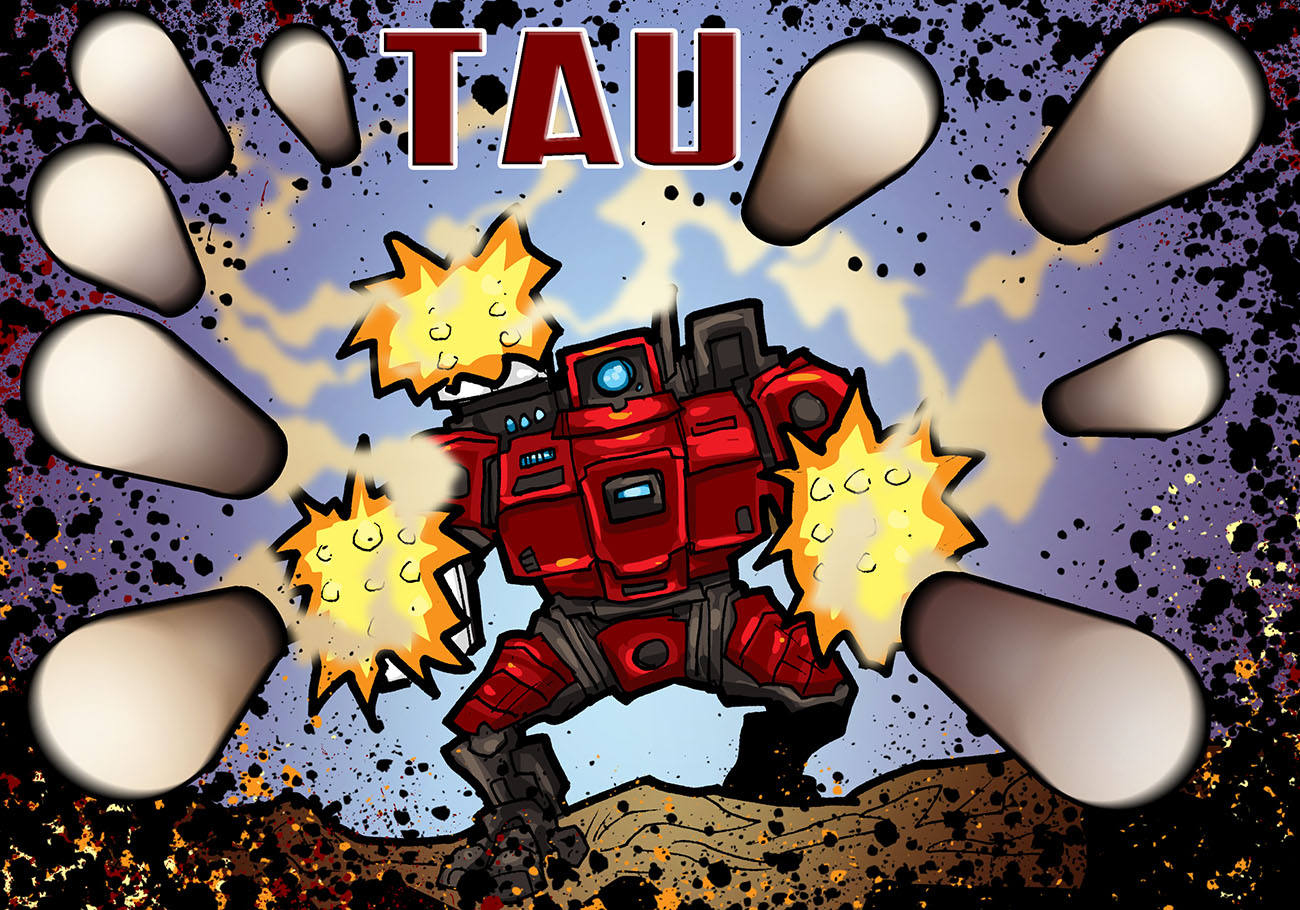
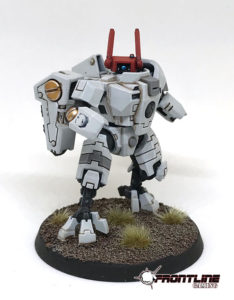
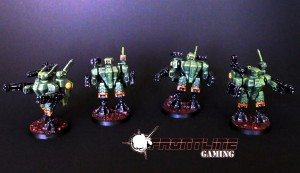
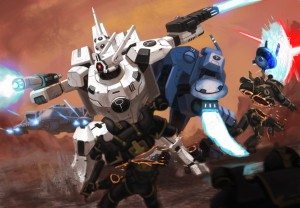

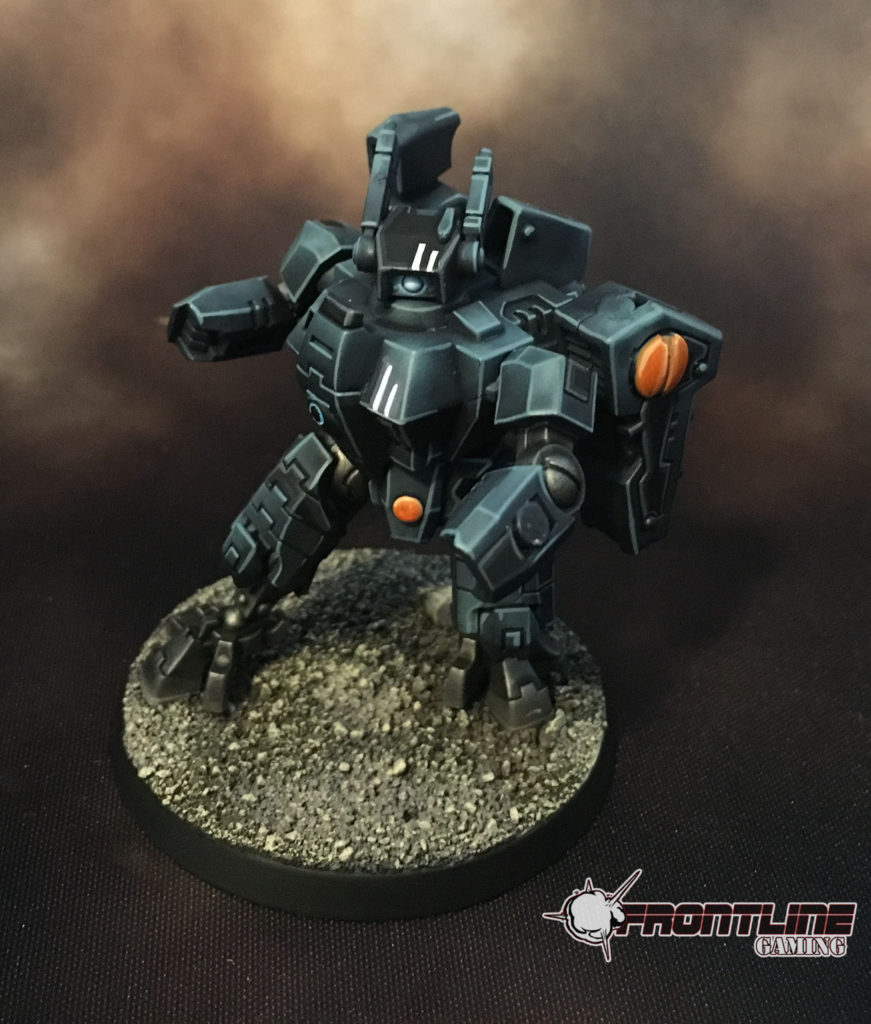


I prefer crisis commanders over enforcers for the sole fact that I have nearly 20 of the darn things gathering dust and only 1 of the enforcer.
Personally i like the FSE Crisis commander with Iridium, Shield Generator, 2 Fusion Blasters, Fusion Blades, a CIB, and 2 Shield Drones.I beta strike with it and a squad of Shield drones and crisis suits using a stealth teams homing beacon so that i can get close enough for the FSE strategem. Try to whipe out a screen in shooting and then assault something big. It keeps the suits and commander from receiving return fire and allows me to fall back and shoot again.
Mind sharing tips on how you’re making the homing beacon work? It has to be placed at the end of the movement phase, so your opponent has their entire turn to get away from it before you can drop anything with it.
The beacon is used at the start of the movement phase, not atvthe end. I keep my stealth suits hidden and then use Wall of Mirrors from ghostkeel (which also happens at the start of the movement) to sling the stealth suits up close to the enemy and drop their beacon.
One thing to remember is that you cannot use Drop Zone Clear if you arrive via a Homing Beacon, which can limit the utility of it.
Let me just run some numbers so I make sure I understand it.
-Start of movement you use WoM to slingshot the stealth suits to wholly within 12″ of the ghostkeel and outside 9″ from the target.
-Next, you drop the beacon within 1″ of the stealth suits. The beacon is on a 25mm base, so we’ll say this gives us an extra 1.95″.
-Finally, at the end of movement you deepstrike the crisis suits wholly within 6″ of the beacon.
-So, to make this better than deepstriking normally your ghostkeel must be, at the start of your turn and before movement, closer than (12″+2″+6″+9″) 29″ from the target you want to hit; 26″ if you want to make use of the FE sept tenet.
Admittedly that’s a bit better than I was expecting.
Yeah, WoM actually gives you a lot of range of where to place guys, but the problem is that you’re having to invest into a unit of Stealth Suits, a Ghostkeel, and a Crisis squad in order to really get any use of it- and that’s a significant chunk of your army right there.
A lot of opponents are also going to be able to shield their “big” targets from you such that you won’t be able to get within 6″ of them to trigger the FSE bonus very often, just by virtue of having models in the way.
Yeah like abusepuppy said, you’re investing a large number of points into a tactic that, if your opponent knows is coming (which should be somewhat obvious), is preventable. However, if you can make it work and still get your value from the other units you need to make it work (stealth suits, GK, etc.) then go for it.